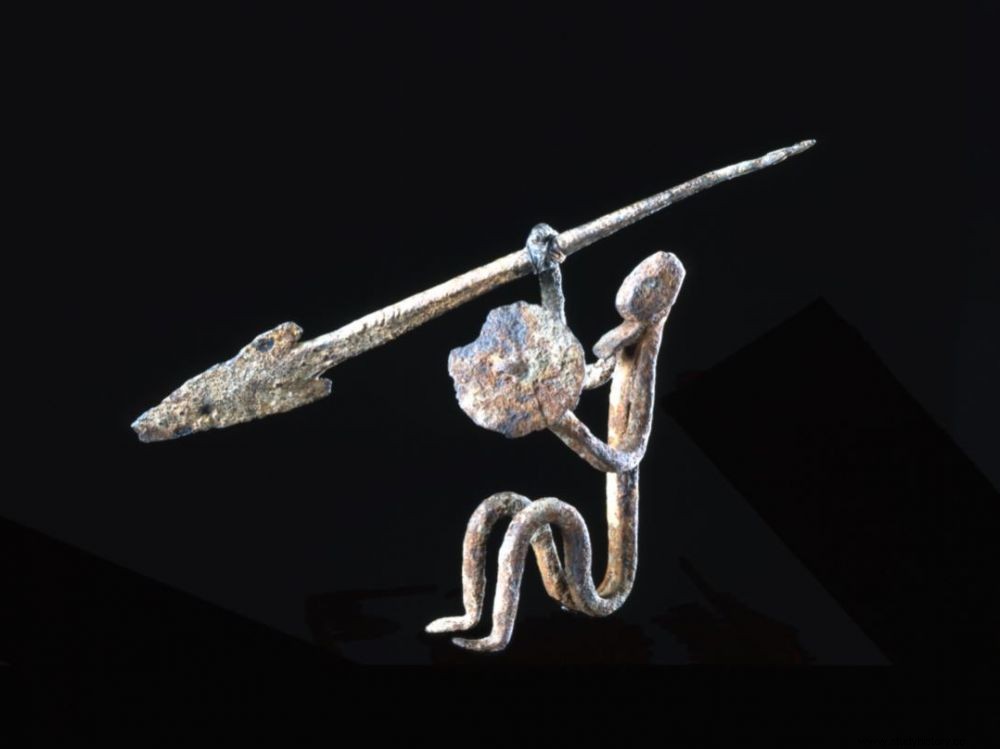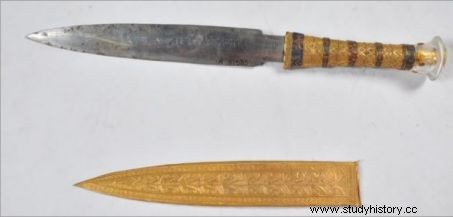On March 4 and 5, 2020, the Musée du Quai-Branly-Jacques Chirac, in Paris, will host an international symposium open to all, on the "Anthropology and Archeology of Iron". To better understand its importance, we interviewed one of the speakers, Laurent Olivier, archaeologist, curator at the National Archeology Museum (MAN) in Saint-Germain-en-Laye.

Iron figure of warrior with spear and shield of Dogon origin, Mali.
As part of the exhibition "Strike iron, the art of African blacksmiths " which is held at the Quai-Branly-Jacques Chirac Museum until March 29, 2020, an international symposium on the "Anthropology and Archeology of Iron" is organized on March 4 and 5, 2020. For two days, specialists will the point on what we know today about the emergence of iron and its use over the last millennia. Laurent Olivier, archaeologist, curator at the National Archeology Museum (MAN) in Saint-Germain en Laye, discusses the importance of iron metallurgy.
Sciences et Avenir:Why a symposium on the archeology and anthropology of iron?
Laurent Olivier: Iron and steelmaking appeared distinctly in different cultures. This symposium will allow to cross the eyes on this ore with strong symbolic and social value, from its first extractions to the manufacture of objects. How was iron extracted from the ore? From when ? In which parts of the world? How was it formatted? By what technical processes? When was the steel industry born, did it develop, and how did it evolve over time are all questions that will be developed during this meeting. An anthropological as much as an archaeological look, which will also include the entire artistic dimension of these creations.
"Meteoritic iron, extraterrestrial iron, is the oldest known iron"

Dagger with an iron blade of meteoritic origin found on the remains of Pharaoh Tutankhamun (2nd millennium BC). Credits:Egyptian Museum, Cairo -Daniela Comelli
What do we know about iron emergence dates?
This is a debated question with extremely variable answers. Nevertheless, the oldest cases identified to date remain on the African continent and in Pharaonic Egypt in particular, with the use of meteoritic iron, extraterrestrial iron, the oldest known iron (thus the tubular beads of the predynastic period unearthed). day in 1911, in Gerzeh, would have been shaped as early as 3300 years BC). What is much more discussed, is what happened. Has there been dissemination of knowledge? Or, distinct hotbeds of innovation and inventions emerged from the ore. What we do know with certainty, however, is that iron appeared in Europe relatively late. The first recorded testimonies relate to small encrustations on objects in the 10th-9th century BC. The real expansion of iron metallurgy in Europe does not date back beyond the 8th century BC.
What can we say about this European Iron Age, of which you are one of the specialists?
The appearance of iron is not only a technological change, it will induce a change in society. Linked to its use arose a social category of warrior aristocracy that did not exist before:a caste of horsemen that later gave rise to chivalry in Celtic society as much as in ancient Rome. For the first time, men fought on horseback. We also see the appearance, at the same time as iron, of social relations linked to debt. That engendered by the dependence that certain individuals will have on others, and which will be characterized by the dimension taken by the funerary monuments of the holders of power.
From this period known as the "Iron Age" (750-50 BC), the more the character is socially important (or "important", women being equally concerned), the more they will be able to mobilize of individuals to have huge tombs erected. Some Iron Age figures will thus have burials 100m in diameter and 20m high! Such burials in Europe had never existed before. The Iron Age actually gave birth to a class society. With the sixth century BC. J.-C. the acceleration of a movement of concentration of power. The aristocracies of the Iron Age saw the emergence of real family dynasties, like the princely tombs of Hochdorf, in Germany, or even recently in France, of Lavau, in Aube. A link between power and metallurgy also maintained in Central Africa and the Sahel, one of the dimensions addressed in the exhibition "Strike iron, the art of African blacksmiths", those of the masters of fire.

Poster of the exhibition "Strike iron. The Art of African blacksmiths". Credit:Quai Branly Museum - Jacques Chirac
